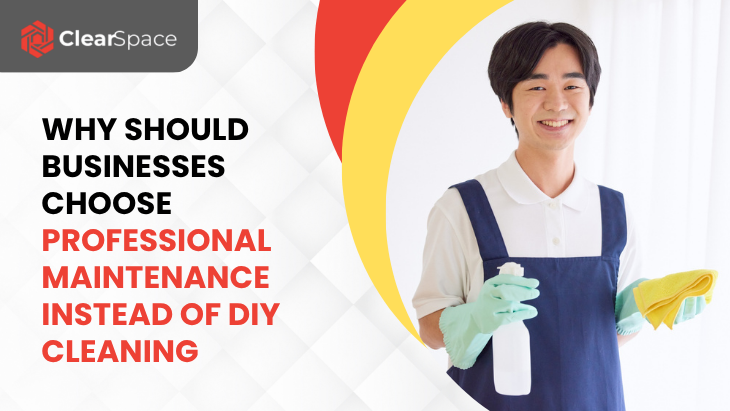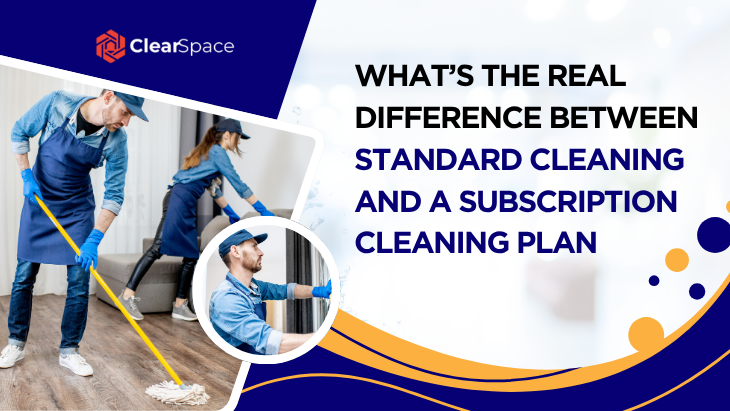As we step into 2025, the way we work continues to evolve, and so must the environments we work in. Office design is no longer just about desks and meeting rooms. It’s about creating intelligent, flexible, and inspiring spaces that support employee well-being, business agility, and cultural connection. |
From hybrid work models to sustainability goals, modern workspaces are being reimagined to meet the demands of a changing world. Design now also incorporates services that go beyond aesthetics, like Trusted Cleaning & Device Repair Services, to ensure that work environments are not only beautiful but also safe, functional, and well-maintained.
At ClearSpace Inc., we specialise in turning design insights into actionable, transformative office interiors. In this blog, we explore the top office design trends shaping the future of workspaces in 2025 and beyond.
Flexible Workspaces
The Rise of Hybrid Work
The hybrid work model has become the norm rather than the exception. Businesses now recognise that the office must serve a different purpose, a destination for collaboration, innovation, and connection, rather than just a place to clock in.
In 2025, companies are designing workspaces that allow employees to move seamlessly between home and office. This means creating areas tailored for both individual deep work and spontaneous team huddles.
Modular Furniture & Multi-Purpose Zones
Flexibility starts with the right furniture. Modular workstations, mobile dividers, and foldable meeting tables make it easy to transform a space based on need. From quiet zones to creative think tanks, one area can serve multiple functions.
At ClearSpace Inc., we often implement multi-functional zones that can evolve throughout the day, supporting everything from one-on-one catch-ups to town hall meetings, all within the same footprint.
Adaptable Layouts for Dynamic Teams
Work is no longer linear. Project teams form and disband rapidly, requiring spaces that are just as agile. Movable partitions, rolling storage units, and plug-and-play collaboration tools allow spaces to flex in real-time.
By designing layouts that accommodate different work styles and team sizes, businesses can foster a more dynamic, responsive culture.
Biophilic Design Elements
1. Natural Light and Ventilation
Designing with nature in mind improves both wellness and productivity. In 2025, there’s a renewed focus on bringing the outdoors inside, maximising daylight, introducing fresh air, and providing visual access to nature whenever possible.
Skylights, glass walls, and operable windows are now standard elements in contemporary office spaces.
2. Indoor Plants and Green Walls
Adding greenery isn’t just about aesthetics. Living walls, potted plants, and vertical gardens have been shown to reduce stress, improve air quality, and even increase creativity.
More companies are now using biophilic design as a foundational strategy, not just a finishing touch.
3. Nature-Inspired Materials and Textures
Think beyond plants, organic textures, earthy colour palettes, and natural materials like wood, stone, and bamboo are being used to evoke calm and connection. These elements soften the commercial nature of offices and make them feel more comfortable and inviting.
Technology-Integrated Spaces
1. Smart Desks and IoT Solutions
Technology continues to streamline the modern workspace. Smart desks with built-in sensors can remember user preferences for height, lighting, and temperature. IoT-enabled systems can monitor room occupancy, lighting, and air quality to ensure optimal working conditions.
These integrations support not only comfort but also efficiency and sustainability.
2. AR/VR for Virtual Collaboration
With distributed teams here to stay, companies are experimenting with AR/VR tools to simulate physical presence during remote meetings. Virtual collaboration platforms can recreate the energy of face-to-face brainstorming, even when teams are continents apart.
Designing dedicated VR rooms or digital labs is becoming more common in future-ready offices.
3. Touchless Tech and Automation
Health and hygiene remain priorities in a post-pandemic world. Touchless doorways, automated lighting, voice-controlled conferencing tools, and app-based room bookings all contribute to a seamless, safer workplace experience.
Sustainable and Eco-Friendly Designs
1. Energy-Efficient Lighting and HVAC
Sustainability isn’t optional—it’s expected. Offices in 2025 are increasingly adopting energy-efficient lighting solutions with motion sensors and LED technology, as well as smart HVAC systems that adjust airflow based on room usage.
These systems not only reduce carbon footprints but also contribute to long-term cost savings.
2. Recycled and Reclaimed Materials
Modern workspaces are embracing circular economy principles. Reclaimed wood, recycled metals, and low-VOC finishes are common in fit-outs that prioritise both style and sustainability.
At ClearSpace Inc., we often help clients source eco-conscious materials without compromising on design or functionality.
3. Carbon-Neutral Office Design Goals
More companies are committing to carbon-neutral goals, integrating LEED certifications, green procurement policies, and lifecycle analysis into their workspace design strategy. These measures are not just about image, they’re about impact.
Wellness-Oriented Workspaces
Quiet Zones and Nap Pods
Mental wellness is taking centre stage. Businesses are integrating quiet pods, meditation rooms, and nap lounges into their office layouts, creating safe havens for employees to decompress.
Such features recognise that productivity and rest are not at odds they’re partners.
Ergonomic Furniture
Physical comfort remains a top priority. From adjustable sit-stand desks and task chairs with lumbar support to monitor risers and footrests, offices are being designed to reduce strain and support long-term health.
In-Office Fitness and Meditation Areas
On-site wellness spaces are no longer rare. Yoga rooms, stretch areas, and even fitness zones allow employees to stay active without leaving the office, promoting both health and engagement.
Open Yet Private Layouts
Acoustic Pods and Phone Booths
As open offices become more flexible, acoustic control is critical. Soundproof booths for calls and deep work ensure that employees can focus without being overwhelmed by noise.
These pods are especially valuable in hybrid environments where video calls are frequent.
Zoned Layouts for Focus and Collaboration
The best offices offer a mix of open collaboration zones and quiet focus areas. Zoning is achieved through furniture placement, acoustics, lighting, and colour, creating distinct environments that support various work modes.
Bold and Playful Aesthetics
Statement Colours and Artistic Installations
2025 offices are moving away from sterile neutrals. Instead, they feature bold accent walls, local art, and branded murals that reflect personality and purpose. These creative touches boost morale and stimulate innovation.
Fun Breakout Spaces and Game Rooms
Creating space for play is essential. Lounge areas, game rooms, and social kitchens give teams a place to unwind and connect, reinforcing culture and community.
Inclusive and Accessible Design
ADA-Compliant Layouts
Inclusion starts with design. Offices are being built with wheelchair-friendly access, wide corridors, and height-adjustable features that accommodate every employee.
Neurodivergent-Friendly Features
Lighting, acoustics, and colour can have a profound effect on cognitive well-being. Offices now consider sensory-sensitive design like softer lighting, tactile surfaces, and choice-based work settings for neurodivergent employees.
Conclusion
As we look ahead, it’s clear that the future of office design is about more than aesthetics; it’s about experience. From modular layouts and biophilic design to touchless technology and inclusive features, every element plays a role in building a productive, human-centric workplace.
At ClearSpace, we don’t just follow trends, we help shape them. Our team is passionate about crafting workspaces that elevate people, performance, and purpose.
Thinking of upgrading your workspace in 2025? Let’s talk about how we can create a dynamic, future-ready environment tailored to your needs.





Leave a reply